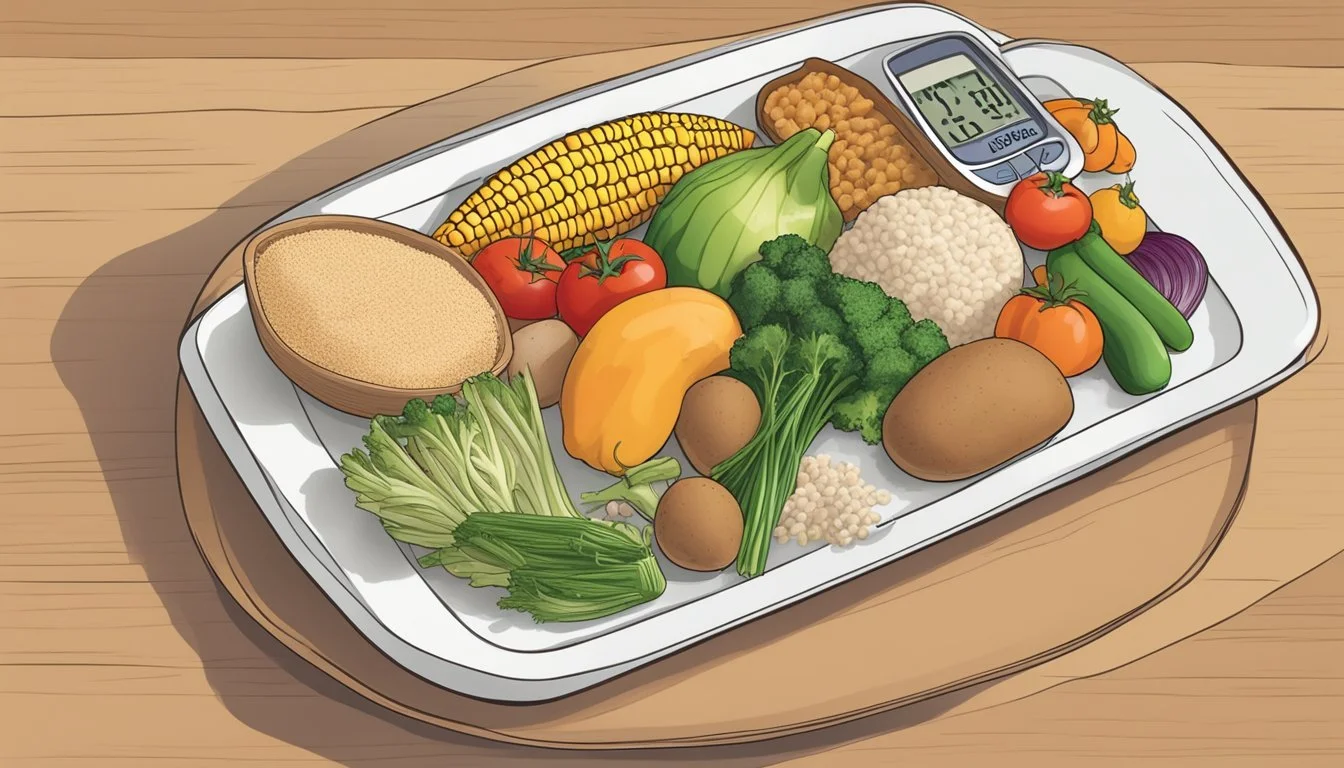Can Diabetics Eat Cusk?
Examining Its Health Impact
For those managing diabetes, understanding which foods can fit into their diet is crucial. A frequent query is whether cusk—a type of fish—can be a part of a diabetic diet. Yes, diabetics can include cusk in their diet as it is a low-carb, high-protein option that can help in managing blood sugar levels.
Cusk, like other lean fish, provides essential nutrients without spiking blood sugar. Fish in general is recommended for diabetic diets due to its omega-3 fatty acids, which promote heart health—an important consideration for people with diabetes. The protein content in cusk aids in satiety, making it a beneficial choice for meal planning.
Including cusk in a varied, balanced diet can not only contribute to nutritional needs but also add flavors and options that make dietary management more enjoyable. For diabetics looking to diversify their meal plans, cusk is a valuable addition worth exploring.
Understanding Diabetes and Nutrition
Effective diabetes management relies significantly on dietary choices, impacting blood sugar levels, energy balance, and overall health. It's crucial to understand the importance of specific nutrients and their roles.
The Role of Diet in Diabetes Management
Diet plays a pivotal role in managing diabetes. Blood sugar levels need to be monitored through careful selection of foods such as non-starchy vegetables, lean proteins, and complex carbohydrates. Restricting carbohydrates to 26-45% of the total calorie intake can aid in better control.
Healthy fats and proteins, free from excessive sodium and sugar, stabilize glucose levels and prevent spikes. Planning balanced meals can mitigate energy crashes commonly associated with refined grains, such as couscous, and maintain consistent energy.
Nutrients Essential for Diabetics
Certain nutrients are vital for diabetics to include in their diet:
Protein: Essential for muscle maintenance and satiety. Sources include poultry, fish, eggs, and nuts.
Carbohydrates: Important for energy, focusing on complex carbs like whole grains and legumes to avoid blood sugar spikes.
Fiber: Regulates blood sugar by slowing digestion. Found in vegetables, fruits, and whole grains.
Healthy Fats: Help in managing cholesterol levels and providing sustained energy. Avocados, nuts, and olive oil are excellent sources.
Sodium: Should be limited to prevent hypertension, which is often a concern for diabetics.
Sugar: Natural sugars are preferable over added sugars, which should be minimized.
Regular monitoring and adjustments based on individual responses to foods are key to maintaining optimal diabetes control.
Examining Cusk as a Dietary Choice
Cusk can be a nutritious and balanced option for diabetics, offering key nutrients while being mindful of their dietary needs. Key points such as its nutritional profile and the benefits of including fish in a diabetic diet will be covered.
Nutritional Profile of Cusk
Cusk, much like its more well-known relatives haddock and cod, is a low-calorie, high-protein fish.
Nutrient Breakdowns per 100 grams:
Calories: Approximately 90-100
Protein: Around 20 grams
Fat: About 0.5 grams
It also contains omega-3 fatty acids, which are essential for heart health. Cholesterol content is low, making it a heart-healthy option.
Cusk provides important vitamins and minerals such as Vitamin D and B-vitamins which are pivotal for maintaining cellular energy levels.
Benefits of Including Fish in a Diabetic Diet
Adding cusk to a diabetic's meal plan provides several benefits owing to its nutritional composition.
High Protein Content: It helps manage blood sugar levels by slowing down sugar absorption. This prevents spikes in blood sugar.
Omega-3 Fatty Acids: These fats lower inflammation and improve heart health, which is crucial for diabetics.
Low in Saturated Fats: This characteristic helps maintain a healthy cholesterol level, reducing the risk of cardiovascular diseases.
Rich in Essential Nutrients: Vitamins and minerals in cusk support overall well-being and contribute to meeting daily nutrient requirements without excessive calorie intake.
Assessing Risks and Considerations
When considering whether diabetics can eat cusk, it is important to evaluate both the nutritional content and potential health risks associated with this fish. Key factors include its mercury content and how it fits into a balanced diabetic diet.
Mercury Content and Fish Safety
Cusk, like many fish, can contain varying levels of mercury. High mercury levels pose a risk to overall health, particularly impacting the nervous system and potentially causing high blood pressure. It is essential to monitor and limit intake of high-mercury fish. Known for its relatively low mercury content, cusk can be a safer option in moderate amounts. Guidelines from health organizations suggest that adults, including diabetics, limit their consumption of low-mercury fish to 2-3 servings per week to mitigate risk.
Balancing Macronutrients and Serving Sizes
Cusk is a lean fish, high in protein and low in saturated fat, making it a favorable option for diabetics aiming to control blood sugar and maintain heart health. Proper portion sizes should be adhered to in order to keep a balance between protein, carbohydrates, and fats. A typical serving size of cusk is about 3-4 ounces of cooked fish.
In addition, balancing cusk with non-starchy vegetables and healthy fats can enhance a meal's nutritional profile. Monitoring overall calorie intake supports weight management, which is crucial in managing diabetes and lowering the risk of heart disease. Properly balanced meals help maintain stable blood sugar levels and promote sustained energy throughout the day.
Guidelines for Diabetic-Friendly Eating
Diabetic-friendly eating emphasizes a balanced diet that includes lean proteins, whole grains, and a variety of vegetables and fruits. These diets can help manage blood sugar levels effectively.
Incorporating Cusk into a Balanced Diet
Cusk, a type of fish, is rich in protein and low in carbohydrates, making it a suitable option for people managing diabetes. Its high protein content can help maintain muscle mass and support a feeling of fullness, which can be beneficial for weight management.
People with diabetes should consider preparing cusk using healthy cooking methods such as baking, grilling, or steaming. Avoid deep-frying, as it adds unnecessary fats and calories. Pairing cusk with non-starchy vegetables and a small portion of whole grains can create a balanced meal. For instance, serve baked cusk with a side of steamed broccoli and a quinoa salad to ensure a nutrient-rich plate.
Alternative Healthy Ingredients and Varieties
In addition to cusk, other lean protein sources like chicken, turkey, and legumes are beneficial for managing diabetes. The American Diabetes Association recommends including a variety of protein, vegetables, fruits, and whole grains in the diet.
Nuts and seeds can also be added for healthy fats. For variety, consider fish like salmon or trout, which are high in omega-3 fatty acids. These alternatives can be incorporated into weekly meal plans for balance and to prevent dietary monotony. Consulting with a dietitian can provide personalized recommendations based on individual health goals and preferences.
Meal Planning and Preparation Strategies
Careful meal planning and preparation can help manage blood sugar levels effectively while allowing for enjoyable and nutritious meals. Below are strategies tailored to support diabetic-friendly eating habits, with a focus on incorporating Cusk into the diet.
Creating Diabetic-Conscious Meal Plans
Planning meals with diabetes in mind involves balancing macronutrients and ensuring consistent blood sugar control.
Portion Control: Utilize the Diabetes Plate Method. Fill half a 9-inch plate with nonstarchy vegetables like broccoli or salad, one quarter with lean protein such as Cusk or tofu, and one quarter with carbohydrate foods like grains or starchy vegetables.
Consistency: Eat at regular intervals, spacing meals out by about two to three hours.
Nutrient Balance: Include a variety of food groups to meet daily nutritional needs. Combining lean proteins, like Cusk, with plant-based proteins, and non-dairy options ensures a balanced intake.
Example Meal Plan:
Meal Components Breakfast Greek yogurt, berries, and chia seeds Lunch Cusk, quinoa, and a mixed green salad Snack Sliced cucumber or an apple Dinner Cusk, roasted sweet potatoes, and spinach
Healthy Cooking Techniques for Cusk
Proper cooking methods preserve the nutrients in Cusk and keep meals healthy and flavorful.
Grilling: Grilling Cusk is an excellent way to reduce fat content while enhancing its natural flavors. Use olive oil and herbs for seasoning.
Baking: Baking Cusk with vegetables such as green beans or squash helps incorporate more nonstarchy veggies into the meal. A squeeze of lemon can add flavor without extra calories.
Steaming: Steaming Cusk keeps it low-fat and tender. Pair it with plant-based protein sources like lentils or chickpeas for a heart-healthy dish.
Spices and Herbs: Avoid high-sodium seasonings. Instead, opt for fresh herbs like dill or parsley to enhance flavor without adding unnecessary salt.
Combining these techniques with carefully planned meals ensures a nutritious diet that supports weight management, heart health, and effective blood sugar control.
Consulting Healthcare Professionals
When discussing whether diabetics can consume cusk, consulting healthcare professionals is essential.
Registered Dietitians play a key role. They specialize in developing nutritional plans tailored to individual health needs. A dietitian can offer personalized advice, ensuring the diet aligns with diabetes management goals.
Besides dietitians, Nutritionists can also provide valuable input. They focus on general dietary habits and nutrient intake. Their recommendations can help in making informed decisions about including cusk in a diabetic-friendly diet.
Medical Practitioners, such as primary care physicians or endocrinologists, should be consulted as well. They monitor overall health and manage diabetes treatment. Their guidance is crucial for integrating any new food items, including cusk, into a diabetic meal plan.
Key Points to Discuss with Professionals:
Nutritional profile of cusk (protein, fat, carbohydrates)
Appropriate portion sizes
Potential impact on blood glucose levels
Involving these specialists ensures a well-rounded and safe dietary approach.








